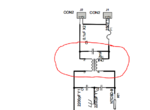boylesg
Advanced Member level 4

- Joined
- Jul 15, 2012
- Messages
- 1,023
- Helped
- 5
- Reputation
- 10
- Reaction score
- 6
- Trophy points
- 1,318
- Location
- Epping, Victoria, Australia
- Activity points
- 11,697
I discovered the hard way that powering my FM transmitter from a wall plug introduces a massive hum to the transmission that drowns out the audio signal from the microphone.
Is there any simple way to reduce or eliminate the hum?
I tried googling the problem but I did not find any sites that emphatically tell me what to do or try.
Is there any simple way to reduce or eliminate the hum?
I tried googling the problem but I did not find any sites that emphatically tell me what to do or try.




